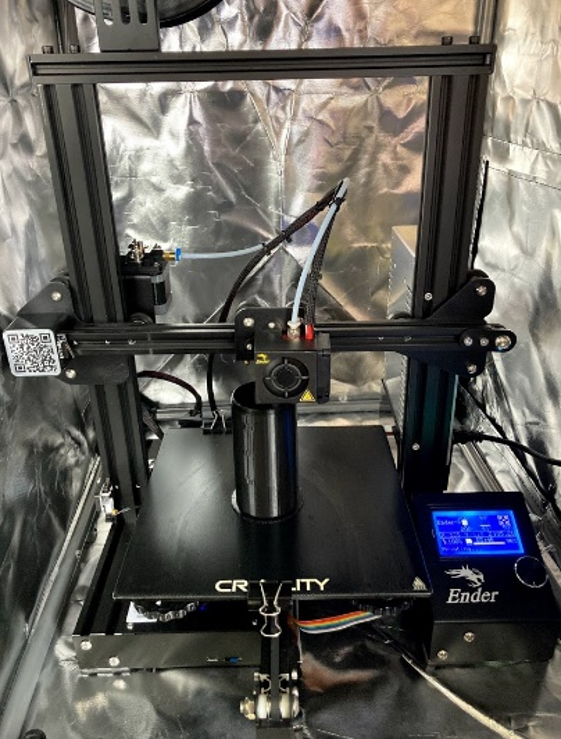UPDATE: I am now posting my 3D designs at: http://3.99.76.122/3d-printing-for-astronomers/
I have to say 3D printing is a mind blower. If you can envision it, work some easily learned 3D design software, or find something on the internet, you can create virtually anything. For astronomy, that means items that used to be special orders for items like dovetails, rings, and adapters from somewhere like ScopeStuff at exorbitant costs can now be simply printed out at home.
In case you haven’t gotten a close look at these marvels of technology, they consist of a framework where a print head can be moved in three dimensions instead of the normal 2 like in an inkjet printed. Instead of spraying ink onto paper, a 3D print head heats up a plastic filament of various materials, and deposits the plastic onto a heated bed, slowly building up layers until the piece is completed. And when I say slowly, I mean it – many 3D printed parts I’ve printed have taken 8-16 hours to print. So, a large 3D printed project is a long-term project requiring a bit of patience!
My 3D printed experience began even before I got a printer, when I discovered someone had created 3D printable motor brackets[1] for my CG5 mount to mount NEMA 17 stepper motors on the mount. Since I didn’t have a printer, I had a problem – how can I get the brackets printed? Google to the rescue – many services exist where you upload a 3D CAD file of the item you would like, specify the material you would like the item printed as (ABS, Acrylonitrile Butadiene Styrene, the same plastic used to make Lego, in my case) and they quote a figure. I ordered the parts for $40 on December 27 and received the order on Jan 4! The image on the right shows the RA axis of my CG5 with the motor mounted on the grey ABS bracket with aluminum GT2 gears and belt (readily available on Amazon or eBay) used as a 4:1 gear reduction before transferring the motor rotation to the 144:1 internal gearing on the mount.

Since then I have purchased a very low cost 3D printer, an Ender 3 Pro for about $300 from Amazon. It’s pictured at right. Filament comes in 1KG rolls for about $27.99 in a wide range of colors (some more expensive printers allow two or more colors but mine is monochrome) which lasts quite a while, given most pieces printed are a few 10s of grams worth of filament.

My printer can print both PLA (Polylactic Acid) and ABS (Acrylonitrile butadiene styrene) although ABS is a bit more problematic since it needs higher heat and an enclosure to keep it from cooling too fast and lifting off the print bed before it’s finished. A cheap enclosure keeps the heat in so ABS prints can be successful, but PLA printing is vastly easier and forms the bulk of my printing. The only problem with PLA is it’s melting point is quite low, and it can become soft when left out in the sun, for example. I bought an enclosure for my printer for about $100 that allows perfect ABS prints when needed.

At left you can see the business end of the 3D print head (printing a guide scope tube) which is fed filament from the spool via a friction mechanism as the head moves over the work piece, depositing a thin layer of plastic as it goes. Instead of printing solid parts and using a lot of filament, 3D printing software creates frameworks within solid pieces that make them mostly empty air but with strong lattices that give it excellent strength. The amount of infill is controllable from the software – parts that need to be quite strong (for example, the pictured PLA tube “plugs” I printed for my 16” telescope strut tubes) can be printed at 100% infill while most parts are usually 20%.

I’m now working on a freely available 3D printed GOTO AstroTracker[2] for DSLR cameras (pictured below from the web site) and a guide scope to go with it. A 3D printed spectrograph[3] is also in the project queue. Stay tuned!

[1] https://www.thingiverse.com/thing:1833860
[2] https://openastrotech.com/
[3] https://www.thingiverse.com/thing:2455390
